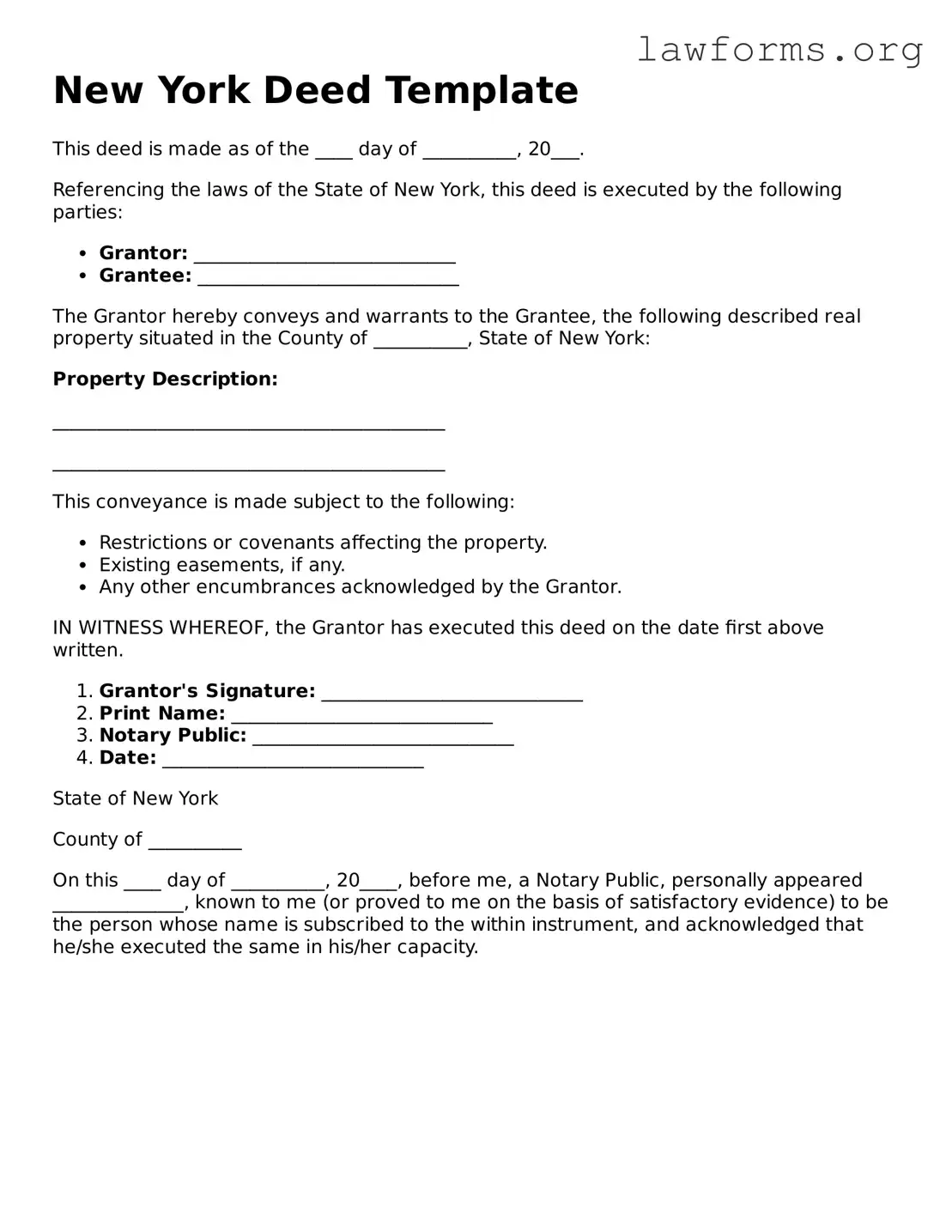New York Deed Template
This deed is made as of the ____ day of __________, 20___.
Referencing the laws of the State of New York, this deed is executed by the following parties:
- Grantor: ____________________________
- Grantee: ____________________________
The Grantor hereby conveys and warrants to the Grantee, the following described real property situated in the County of __________, State of New York:
Property Description:
__________________________________________
__________________________________________
This conveyance is made subject to the following:
- Restrictions or covenants affecting the property.
- Existing easements, if any.
- Any other encumbrances acknowledged by the Grantor.
IN WITNESS WHEREOF, the Grantor has executed this deed on the date first above written.
- Grantor's Signature: ____________________________
- Print Name: ____________________________
- Notary Public: ____________________________
- Date: ____________________________
State of New York
County of __________
On this ____ day of __________, 20____, before me, a Notary Public, personally appeared ______________, known to me (or proved to me on the basis of satisfactory evidence) to be the person whose name is subscribed to the within instrument, and acknowledged that he/she executed the same in his/her capacity.
